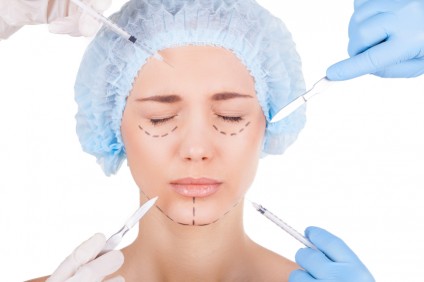What is a “healing birth” and why would you need one?
In the world of natural childbirth, a healing birth is a do-over for a birth that did not meet the prescribed ideal. It might be a do-over for a C-section or a do-over for an attempted homebirth that ended with a hospital transfer.
According to Dictionary.com, the definition of heal is:
[pullquote align=”right” cite=”” link=”” color=”” class=”” size=””]You can’t stop think about one or more perceived flaws in your birth experience, flaws that, to others, are minor or unimportant.[/pullquote]
[T]o make healthy, whole, or sound; restore to health; free from ailment.
What do women seeking a healing birth consider unhealthy, unsound or broken after having a C-section or a transfer from homebirth? Their bodies? Their spirits? Their self-image?
Where did they get the idea that any or all of these things were broken by having something other than an unmedicated vaginal birth without interventions?
It wasn’t from an obstetrician, because obstetricians view C-sections as life saving procedures, not a sign of “broken-ness” of the women who have them. I suspect it was not a husband or partner who convinced them that they were a lesser woman for having a C-section. He was probably thrilled to be a father and considers the method of birth to be irrelevant.
Which raises the question: is obsession with natural childbirth a form of body dysmorphic disorder (BDD)?
What is BDD?
According to the Mayo Clinic:
Body dysmorphic disorder is a mental disorder in which you can’t stop thinking about one or more perceived defects or flaws in your appearance — a flaw that, to others, is either minor or not observable…
… [Y]ou intensely obsess over your appearance and body image, repeatedly checking the mirror, grooming or seeking reassurance …
You may seek out numerous cosmetic procedures to try to “fix” your perceived flaw…
The natural childbirth variant of BDD might be described as a disorder in which you can’t stop thinking about one or more perceived flaws in your birth experience, flaws that, to others, are minor or unimportant. You intensely obsess over your birth experience, relentlessly reviewing it and finding it lacking. You may seek to have a “healing birth” to try to fix your obsession with the imperfections of previous births.
That doesn’t mean that your distress is not real.
I don’t doubt for one moment that the distress felt by Joni Edelman, the woman who wrote My Labor And Birth Didn’t Go As Planned — And No, I’m Not ‘Over’ It, is anything other than real.
Joni planned the homebirth of her dreams to make up for the shoulder dystocia that nearly killed her toddler at her previous homebirth. The fact that she was at great risk for having another shoulder dystocia and killing this baby apparently did not factor into Joni’s plans. Alas, another big baby and this time a stalled labor requiring transfer to the hospital. Joni was inconsolable, and still is four years later.
I don’t want to hear I’m lucky because I could have had a C-section, that he could have died, or that I could have died — because those things didn’t happen, and pain and loss are relative.
Is my loss comparable to the death of a child? No. But it is loss.
After his arrival, I watched friends give birth, peacefully, at home, and I sobbed.
I don’t have to feign gratitude, because I lost something that was important to me. I don’t have to pretend that I’m lucky he’s healthy, because his health and my lack of an abdominal scar don’t mean I’ve forgotten laboring in a dingy hospital room.
Joni can’t stop thinking about a perceived flaw of her body; she couldn’t gently push a baby out of her vagina while observed by friends and family. That perceived flaw has acquired tremendous importance in her life.
Ina May Gaskin, the grandmother of American homebirth midwifery, is often quoted as saying:
Your body is not a lemon… Human female bodies have the same potential to give birth well as aardvarks, lions, rhinoceri, elephants, moose, and water buffalo …
But who ever implied that having a C-section or other childbirth interventions means that your body is a lemon?
It was Ina May Gaskin herself. She prescribed a treatment, homebirth, for a disease that women didn’t know they had: the need to prove that a baby could transit your vagina while you eschewed pain relief or modern medical care.
When a person with body dysmorphic disorder seeks multiple plastic surgeries for a flaw that only they can perceive we don’t commiserate with them on their terrible flaw. We suggest therapy to ease the anxiety and grief over the perceived loss.
When a person with childbirth dysmorphic disorder seeks a “healing birth” with a subsequent child we should not commiserate with them on the need to redeem themselves with a do-over. We should be suggesting therapy to ease the anxiety and grief over the perceived loss.
It is bad enough to have repeated unnecessary plastic surgeries to address an imagined body imperfection. It is far worse to expect a baby to heal you from the imagined flaw of childbirth imperfection.


